This might be a late post but it might help other developers...
You need to set setWebViewClient on webview before loading the URL on it like below,
webview.setWebViewClient(new WebViewClient() {
public boolean shouldOverrideUrlLoading(WebView view, String url) {
return false;
}
});
Some background of the above code, Documentation states in literals words like below about the shouldOverrideUrlLoading method.
* @param view The WebView that is initiating the callback.
* @param request Object containing the details of the request.
* @return {@code true} if the host application wants to leave the current WebView
* and handle the url itself, otherwise return {@code false}.
*/
@Override
@SuppressWarnings("deprecation") // for invoking the old shouldOverrideUrlLoading.
@RequiresApi(21)
public boolean shouldOverrideUrlLoading(@NonNull WebView view,
@NonNull WebResourceRequest request) {
if (Build.VERSION.SDK_INT < 21) return false;
return shouldOverrideUrlLoading(view, request.getUrl().toString());
}
If you see the documentation above for returning the value, it says,
@return {@code true} if the host application wants to leave the current WebView
*and handle the url itself, otherwise return {@code false}.
So it simply says, If you return true from shouldOverrideUrlLoading method, it'll ask the default browser of your device to handle the request of opening the URL and if you return false, then your URL will be loaded through webview only.
Now you can load your URL in webview either after this setWebViewClient call or you can also load your URL inside shouldOverrideUrlLoading method before returning the value.
